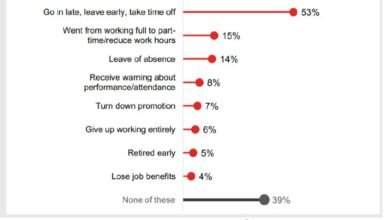
By | SEO Expert
Leadership plays an integral part in any modern organisation. It has far-reaching effects and repercussions on the performance and team culture within an organisation through a leader’s values, styles, plans of action. Leadership Training and styles have been known to increase employee morale and drastically improve the culture. Leadership has always been at the core to decide the performance of the team and organisational growth.
So, understanding What are Leadership Qualities and above all, embracing dynamic values of leadership becomes important for each and every one in today’s modern workplace. Leadership values are very important in shaping team dynamics, which are of much importance for organisational success. The blog offers an insight into the way leadership values and qualities influence the performance of a team and the morale of the members.
Table of Contents
- Leadership Styles
- Desired Leadership Qualities and Values
- Impact of Leadership on the Team
- Insights into Dynamic Leadership
- Conclusion
Leadership Styles
Given below are the different types of leadership styles that can cultivate a better work culture:
- Autocratic Leadership: Autocratic leadership is characterised through leaders who’re insatiable perfectionists and work at fast pace to complete obligations.
- Democratic Leadership: A democratic leader uses the feedback from the whole team in decision-making. This approach encourages greater employee involvement.
- Affiliative Leadership: An affiliative leader helps in improving the team’s emotional intelligence and interpersonal relationships. This approach helps improve the emotional health of the team.
- Authoritative Leadership: Authoritative leaders are task-focused and have a clear vision, often entailed with stringent policies and procedures.
- Transactional Leadership: Transactional leaders allocate tasks and then closely monitor for guideline adherence and achievement of objectives.
Desired Leadership Qualities and Values
Stated below are a set of qualities that are desired in leadership:
- Sharing a common vision: A leader should have a clear and inspiring vision to motivate their team. The vision must be achievable for the team to work together in unison.
- Set clear goals: The projected goals ought to be clear enough to the members for them to know what exactly they are doing and what is expected of them.
- Encourage self-development: Encouraging self-development among employees, will help in promoting a dynamic team wherein the team members feel motivated to work with efficiency and grow in their professional lives.
- Opportunities for collaboration: Collaboration helps team members to feel engaged and a part of the work community. Collaboration should be encouraged to enable the connection between the team’s operations and achieving team goals.
- Build a healthy workplace: Creating a healthy workplace for team members encourages them to work in line with set visions. In a healthy workplace, the employees always feel safe and valued, hence improving the quality of work.
Impact of Leadership on the Team
Leadership is about helping individuals and groups work together to achieve common goals and targets. The way leaders perform affects the teams’ work and success rates. Leadership isn’t about demanding your subordinates work under your order but creating a relationship based on trust, duty, and shared goals.
In its primary sense, leadership encompasses the skill or ability of an individual, group, or organisation to influence, guide, or ‘lead’ fellow workers towards a shared goal. Good leadership significantly enhances employee morale, productivity, and overall organisational success. Effective leadership also ensures good communication, inclusion, and empowerment, which affects the team positively.
When powerful leaders empower their people, the team grows as they become more comfortable with their decision-making skills and strive to deliver their best work. Through better communication, a more inclusive environment, and empowered colleagues, leadership boosts morale and enables the team to achieve goals together.
Insights into Dynamic Leadership
Have you ever wondered what sets a dynamic leader apart? It begins with a compelling vision and the ability to make it work in a way that captivates their team members. These leaders have high emotional intelligence to read a room and empathise with team members to build a strong relationship.
Dynamic leaders are proactive agents of change. They recognise that the only constant thing is change; hence, they develop an organisation’s culture to thrive in such a dynamic environment. They motivate organisations and teams, filling them with vibrancy, creativity, and the ability to change.
Flexibility and a positive attitude help them work through challenges and turn obstacles into stepping stones for growth. In a constantly changing world, dynamic leaders are the baton holders who drive their teams towards a sea of possibilities.
Conclusion
Leadership qualities and styles are of prime importance to team dynamics. Good leadership pursues the goal of maintaining the team’s morale and productiveness at a high level to ensure that the organisational goals are carried out. As workplaces continue to grow, leaders have to adapt to this change to be efficient. They must recognise that leadership is not a standstill concept but a driving force towards growth and success.






